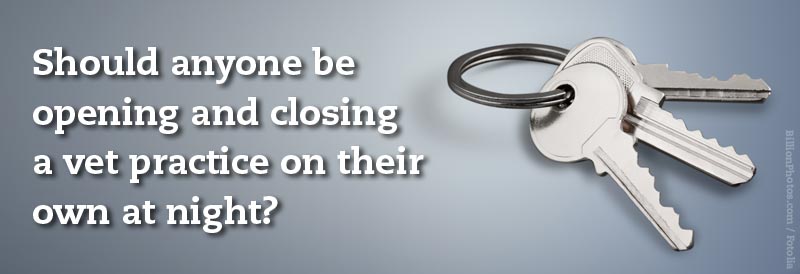My blog posts are generally written in an attempt to provide a balanced view on VN and industry issues or to get your opinions on certain subjects. Well, let’s forget that for today – I’m getting off the fence…

I loathe the subtly titled “patient checks” I see on some job adverts, particularly when those same ads proudly proclaim “No OOH” – but what is a patient check if not out-of-hours work?
Plus, how is the patient check (PC) rota organised? Is it:
- who lives closest?
- Who has a car?
- Who has a partner willing to come with them to provide security?
I’ve seen all these as reasons for people to cover PCs (both vets and nurses) and I don’t think it’s a very professional attitude towards paying clients.
Money for nothing
On the subject of payment, do practices that get staff to do PCs charge for their patients’ hospitalisation? If so, where does that money go? To the person covering the duty? Or is that person given an hourly rate that goes on top of their salary? Because let’s not forget this is not a duty everyone will have to do.
Even if you have a fair rota system some people will get lucky and have no PCs to cover, so why should they get paid the same as someone who has to come in and spend two hours caring, medicating and cleaning?
I’ve too often seen PCs being discussed with staff as being a “quick check”, “not much work”, “they rarely happen” – but if you do your job well it will rarely be a quick check. Plus, you will want to offer the same number of PCs to every patient, so it won’t be a rare event.
Worst case scenario
The RCVS guidelines on patient care make for interesting reading – I particularly like the section on continuity and co-ordination of care.
Clause 2.10 states: “Veterinary surgeons and veterinary nurses should facilitate the safe transfer of patients between veterinary practices, including outside normal working hours” – but I think some practices forget this area. It doesn’t matter if the patient is being transferred to a branch practice or a referral hospital.
With regard to the “continuity and co-ordination of care” in general, vets should note that the level of care encompasses nursing care, and should consider the qualifications and experience of staff on the rota for that day.
They should also be considering worst case scenarios. For example, if the person on PCs finds the patient has removed their IV line are they capable of replacing it by themselves? If not who do they call? Do you allow student nurses enrolled with the RCVS to carry out checks unsupervised? Have you checked with the RCVS on this?
So, we’ve covered the patient needs, cost, and who is able to do PCs. Now an unspoken issue in the veterinary industry…
Staff safety
 Yes, staff safety. Not from the patients (although that is an issue – what happens if you get bitten in the practice on your own?) – no, my main worry is safety from other people.
Yes, staff safety. Not from the patients (although that is an issue – what happens if you get bitten in the practice on your own?) – no, my main worry is safety from other people.
For example, should anyone be opening and closing a vet practice on their own at night?
After years in retail management I know it’s common practice to have a policy that staff only open and close the store in pairs. As veterinary practices are a target for both money and drug thefts, surely the same should apply? As pet theft rises this must also be noted. Rescue centres have long had an issue with people stealing animals, and there is no reason to think this won’t move to vets.
You would be surprised how quickly people notice a routine: PCs at 10pm when everywhere else is quiet will be noticed.
Improving the situation
How can the industry proceed? We need to have a better plan for this essential area of care. Instead of patient checks would staff rather just work a full late shift? Introducing a 3-11 or 4-12 shift?
If you need to remain with PCs, can you ensure the practice is properly staffed? Having two people on the rota to provide safety and a better level of care would also reduce the time spent on PCs – sharing the load and making them less of a chore – and would also mean lay staff and student VNs could be included, as long as they are accompanied by an RVN or MRCVS.
Until more practices advertise the requirements of the role properly I’ll be off the fence for “patient checks”.

Leave a Reply